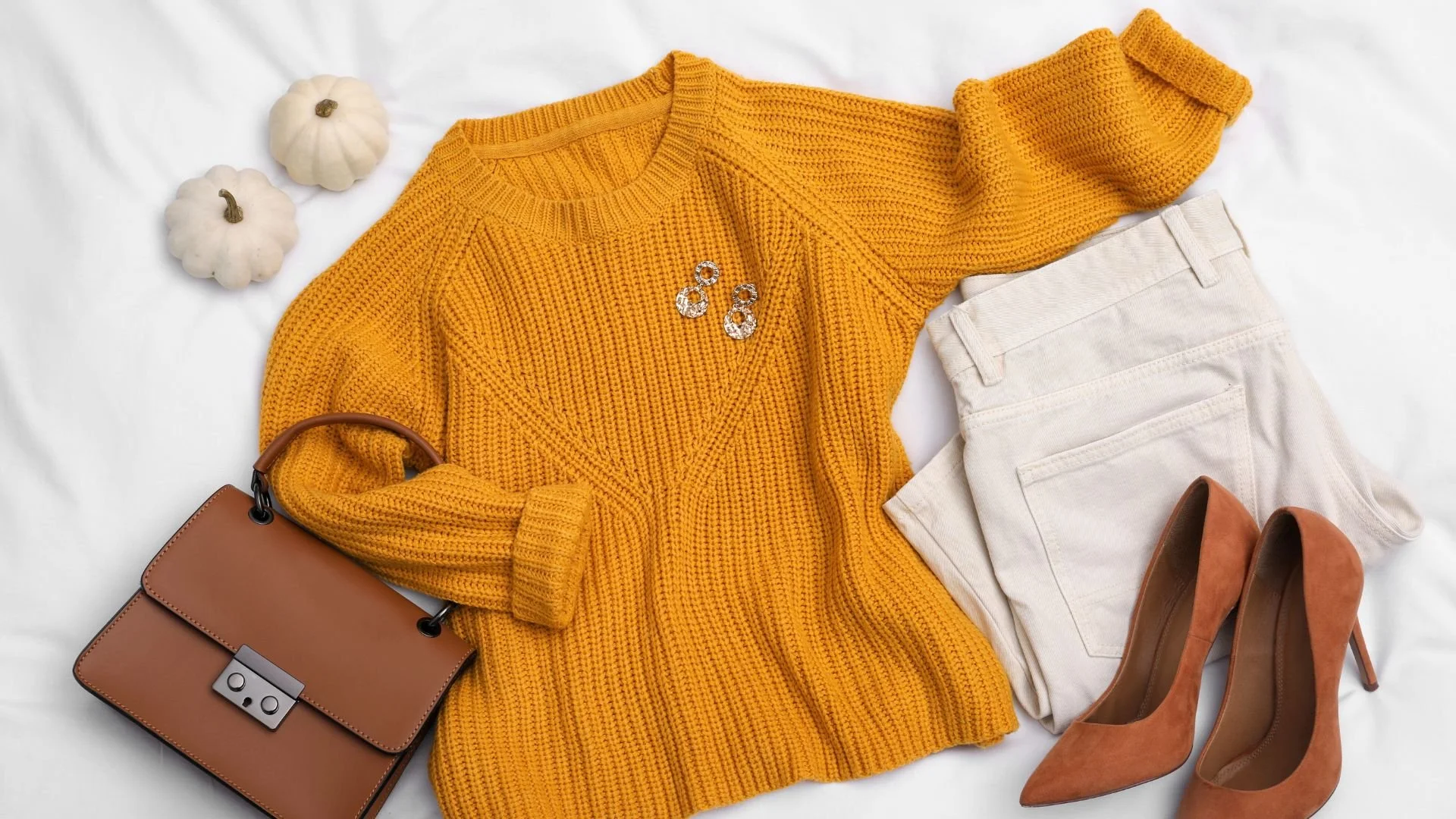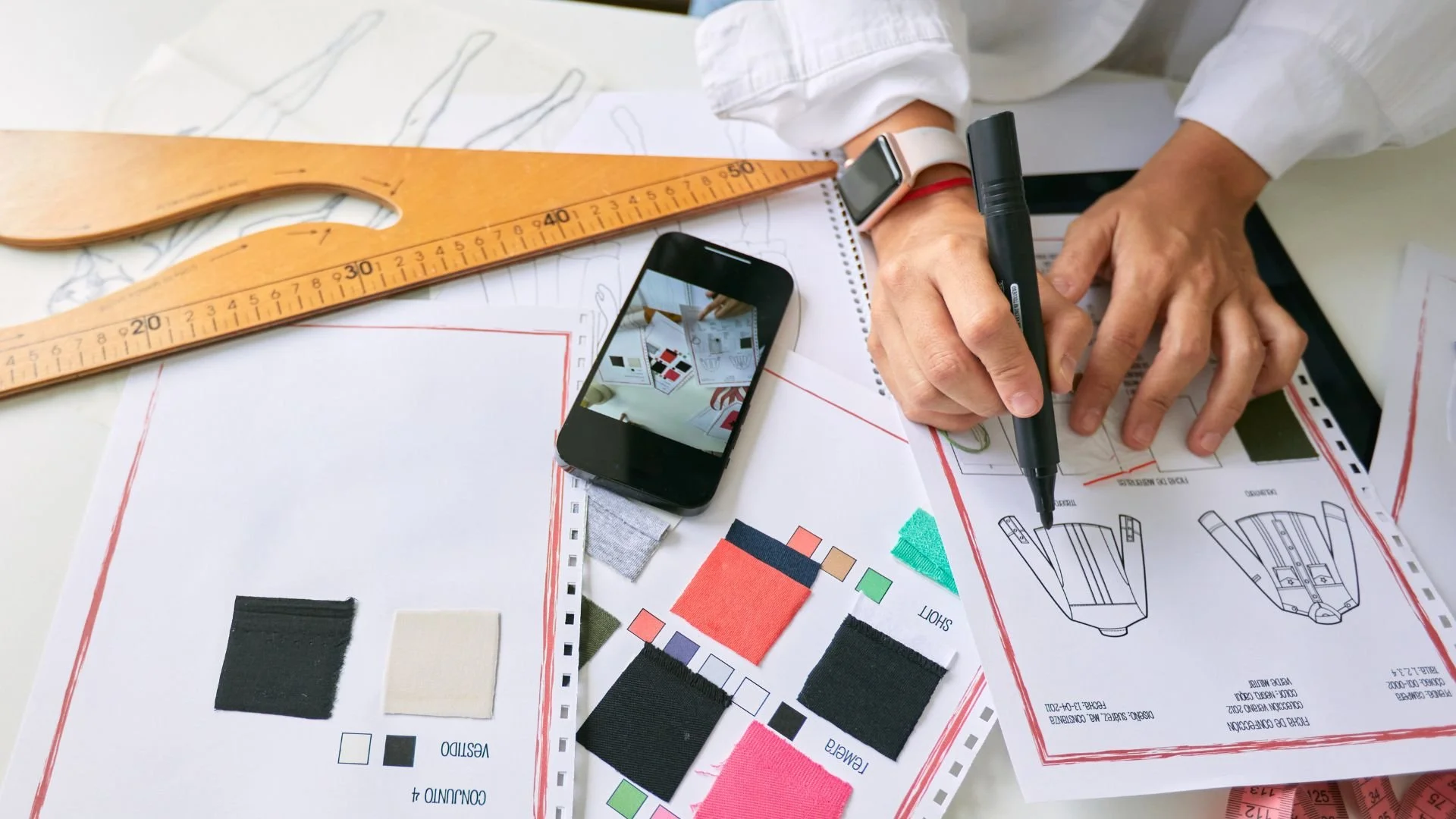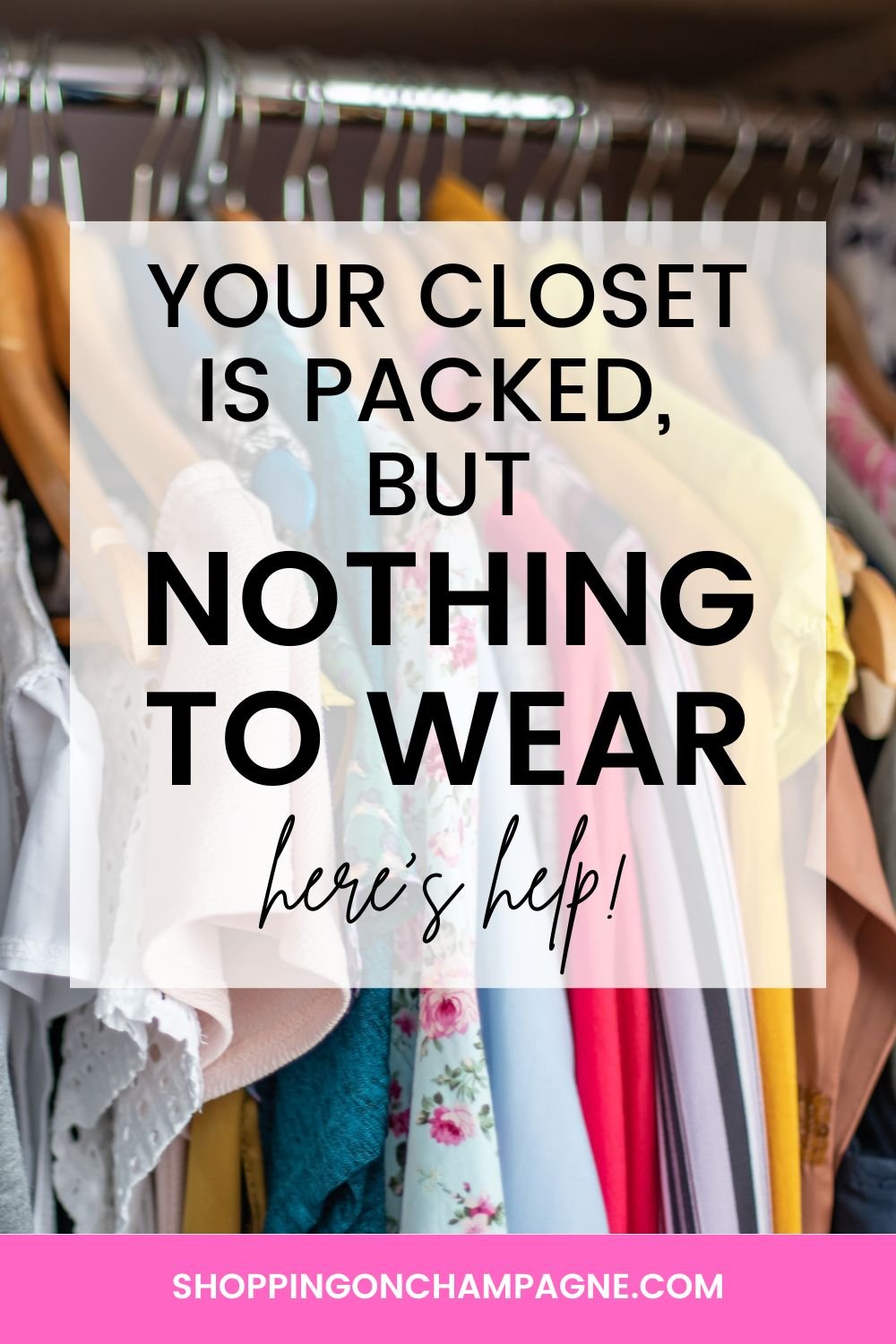Nothing to Wear? Try Outfit Planning!
We've all been there – standing before a closet packed with clothes, yet feeling like we have nothing to wear. It's a dilemma that many of us face daily. It consumes our mornings and leaves us in a state of sartorial frustration.
But what if I told you that the solution doesn't lie in buying more clothes but in mastering outfit planning?
Dive into this post as we embark on a transformative journey, unveiling how simple strategies can change how you perceive your wardrobe. Say goodbye to decision fatigue and hello to a curated closet that effortlessly reflects your personal style and is ready for any occasion.
You can watch the video below or read the full blog post for details!
Outfit Planning: Nothing To Wear? Do This!
Do you open your closet (packed with clothes) and say? “I have nothing to wear.”
We are going to solve that problem right now!
Why Outfit Planning Matters
Combatting Decision Fatigue: The Power of Pre-selecting Outfits
You might have encountered mornings where the most straightforward decisions seem daunting.
Which cereal to have for breakfast? Which route to take to work? Which emails to tackle first? Believe it or not, these seemingly benign choices can accumulate, leading to what psychologists call "decision fatigue."
What is Decision Fatigue?
Decision fatigue is the deteriorating quality of decisions after a lengthy decision-making session. It's not only related to decisions about crucial subjects; it can relate to any choice.
As a day progresses and more decisions are made, our mental reservoir of energy depletes. This can lead to impulsive or ill-thought-out choices or even wholly avoiding making decisions altogether.
The Impact on Daily Life
No matter how minor, every choice draws from the same cognitive pool. Have you ever wondered why shopping for groceries can feel overwhelming or why you're more likely to reach for junk food by evening than to cook a healthy meal? This is decision fatigue in action.
Renowned psychologist Roy F. Baumeister conducted studies on this phenomenon. In one of his experiments, participants who made choices about mundane things (like the color of a shirt) were later less resilient in tasks requiring self-control than participants who hadn't made prior choices.
Wardrobe Choices and Mental Load
Now, consider the act of choosing an outfit. It seems straightforward, but it's layered with decisions:
What's the weather like?
What's the day's agenda?
What clothes are clean and ironed?
What haven't I worn recently?
What will make me feel confident?
This barrage of questions can be overwhelming, especially when you're already juggling other morning tasks. When you multiply this by every single day, you can begin to grasp the mental toll it can take over time.
The Magic of Pre-selection
By pre-selecting outfits, you will:
Safeguard Mental Energy: When the decision is made beforehand, the morning becomes one task lighter, preserving cognitive energy for other, perhaps more critical, decisions.
Ensure Thoughtful Choices: Planning outfits in a relaxed setting (like on a weekend) means your choices tend to be more deliberate, aligning better with your style and the day’s requirements.
Boost Confidence: Knowing that you've already put thought into your appearance can provide a confidence boost. There's no second-guessing or hastily changing outfits multiple times.
Create Time: Removing the outfit decision from your morning can also grant you a few extra minutes, whether that’s more time for breakfast, meditation, or a slower start to your day.
Addressing decision fatigue doesn't mean you have to eliminate every choice from your life. It’s about recognizing which decisions, if made in advance, can pave the way for a smoother, more focused day.
Pre-selecting outfits is a simple yet powerful step in this direction, gifting you a well-coordinated look and a fresher, more resilient mind to face the day ahead.
The Process Unveiled
1. Inventory Assessment: Rediscovering & Refining
Discover Hidden Gems: Every closet has them—the garments pushed to the back, forgotten amidst newer purchases. Periodically, go through every piece of clothing. You'll be surprised at what you rediscover.
Mending & Maintenance: During your inventory check, identify clothes that need a little TLC. Perhaps a missing button, a slight tear, or a loose hem. Repairing these can breathe new life into them.
Let Go of the Old: If pieces no longer fit, have gone out of style, or don't resonate with your current preferences, consider donating, selling, or recycling them. Streamlining your wardrobe can often make outfit selection more manageable.
2. Theme Play: Channeling Daily Inspiration
Structured Yet Spontaneous: Having a theme can give a structured starting point to your outfit choice, but there’s plenty of room for creativity within that theme. "Boho Fridays" might see you in flared jeans one week and a flowy maxi dress the next.
Group Activities: If you're working in a team or doing activities with friends such as tennis or walking, suggest theme days as a group activity. It becomes a fun, shared experience and can lead to some delightful wardrobe insights from peers.
Reflecting Personal Milestones: Use themes to celebrate personal events or milestones. Maybe "Red Tuesdays" to commemorate the day you achieved something significant, or "Polka Dot Wednesdays" as a nod to a cherished memory.
3. Dabble in Combinations: The Art of Pairing
Unexpected Matches: Some of the best outfits come from unforeseen pairings. That formal blazer might work with a casual graphic tee, or an evening dress can be toned down for daytime with a denim jacket.
Out of the Box Thinking: Push yourself out of your comfort zone. If you always wear a particular shirt with a specific pair of pants, challenge yourself to match it with something different next time.
Get External Input: Sometimes, fresh eyes can see combinations you might never consider. Invite a friend over for a styling session. Their perspective could lead to some delightful discoveries.
4. The Magic of Accessories: Transformative Touches
Elevate Basics: Even the most basic outfit—a white tee and jeans—can be transformed with the right accessories. Think statement necklaces, oversized sunglasses, or a vibrant scarf.
Cost-effective Updates: Instead of buying new clothes, investing in versatile accessories can provide more outfit combinations. A new belt or set of earrings can offer multiple looks at a fraction of the cost of new garments.
Mood Reflectors: Accessories can be an excellent way to express your mood. Feeling boho? Add some layered necklaces. In a minimalistic mood? Opt for simple studs and a sleek watch.
5. Consider the Seasons: Dressing for the Elements
Rotational Wardrobes: Divide your wardrobe into seasonal segments. Store off-season clothes away to make daily selections easier and reduce wardrobe clutter.
Weather Wise: It’s a good idea to check the week's forecast while planning outfits, especially in places with fluctuating weather. This ensures you’re both stylish and comfortable.
Capture the Essence: Each season has its essence. Winter might be about cozy layers and warm tones, while summer could be about breezy fabrics and vibrant hues. Allow the season's spirit to inspire your outfit choices.
Document & Organize
Master Your Wardrobe with Documentation & Organization
In the age of digitization, there's no reason why our wardrobes should be left behind. Here's how to utilize technology and meticulous documentation to streamline your outfit selection:
1. Click & Capture: The Power of Visual Memory
Quality Matters: While the focus is on the outfit, ensuring good image quality can make a world of difference. Ensure there's enough natural light and that the image is clear. This way, you can see the exact shade of clothing items and how they pair together.
Consistency: Try to take photos from the same angle and location. Over time, this creates a uniform look to your catalog, making it easier to compare outfits.
Capture Variations: If a particular garment can be styled in multiple ways, don't hesitate to click each version. It serves as a reminder of the garment's versatility and provides more options when you're in a fix.
2. Digital Cataloging: The Modern Wardrobe Diary
Structured Folders: Dumping all photos into one folder will lead to chaos. Organize your digital wardrobe meticulously. Categories could include 'Work', 'Casual', 'Winter', 'Summer', 'Events', and so on. Subfolders can further categorize these by color or clothing type.
Fashion Apps: Platforms like Stylebook are excellent tools to elevate your outfit planning. They allow for easy organization outfit planning and even offer features to track when you last wore an outfit or to add items you wish to purchase.
3. Annotation Time: Detailing the Devil
Not Just Clothes: Your notes shouldn’t be restricted to just clothing. Include details about the occasion where you wore (or plan to wear) the outfit, any compliments received, or how you felt wearing it. Over time, this provides invaluable insight into your style preferences and boosts.
Accessory Mapping: Instead of storing accessories out of sight, noting down pairing ideas can be transformative. It's easy to forget that vintage brooch or those turquoise earrings. Annotate your outfits with accessory options so they're never overlooked.
Feedback and Adjustments: After wearing an outfit, jot down any feedback. Maybe the heels were uncomfortable for a long day, or the belt didn't match. So that the next time you choose that outfit, it’s optimized for comfort and style.
Revisit & Refine
Revisit & Refine: The Evolutionary Wardrobe
Dressing up isn't just about putting on clothes—it's a form of expression, a mirror reflecting your personalities and moods. As you evolve and grow, so should your wardrobes. Here's how to ensure your wardrobe remains fluid, adaptive, and refreshed.
1. Seasonal Refresh: Embracing the Fluidity of Fashion
The Evolution of Style: As seasons change, so do our tastes. What appealed to you last year or month might not resonate now. Considering this, it's essential to review and adjust your wardrobe regularly.
Mood Boards and Trends: Stay updated with current fashion trends. Tools like Pinterest or fashion magazines can be excellent guides. Create mood boards to visualize how you can incorporate specific trends using existing pieces or what new additions could be made.
Thematic Variations: Revisit your outfit themes every season. While 'Summer Breeze Mondays' might be apt for warm weather, transitioning to 'Mocha Latte Mondays' could be cozier for the colder months, guiding outfit choices in those directions.
2. Wear & Reflect: More than Just Fabric
Comfort is King: No matter how fashionable an outfit is, it can disrupt your day if it isn't comfortable. After wearing an outfit, evaluate how it felt. Adjustments like changing a shoe type or opting for a looser fit can significantly affect future wearing.
A Confidence Check: Clothes can be powerful mood enhancers. If a particular outfit made you feel top-of-the-world confident, note it down. On days when you need a boost, you'll know exactly which ensemble to wear.
Feedback Mechanism: Share your outfits with close friends or family and invite their feedback. Often, an external perspective can provide insights you might miss, leading to even better outfit choices in the future.
3. Shopping with Purpose: Intention Over Impulse
The Power of Lists: Review your closet or photographs before hitting the stores or shopping online. Identify gaps or potential upgrades in your wardrobe. Creating a shopping list ensures purposeful buys and prevents unnecessary purchases.
Quality Over Quantity: Instead of going for numerous fast-fashion pieces, invest in fewer, high-quality items that last longer and are versatile. For instance, a well-fitted, neutral blazer can elevate multiple outfits across seasons.
Sustainability: Outfit planning promotes a more sustainable approach to fashion. Knowing what you need reduces waste and makes more eco-friendly purchases. Consider brands that are ethically produced and environmentally friendly. This way, your wardrobe looks good and feels good morally.
To truly enjoy the benefits of a refined wardrobe, treating it as an ongoing project is essential. It's not about reaching a 'perfect' wardrobe status but about continuously evolving it to suit your changing life, tastes, and circumstances.
Wrap Up
Outfit planning is more than a routine—it's a way to unleash your style. So that every piece you’ve invested in, whether monetarily or emotionally, gets its day in the sun. In the process, it revamps your relationship with your wardrobe, turning daily dressing into a joy rather than a chore.
Give it a try, and watch your wardrobe transform from “a closet full of clothes with nothing to wear” to “a treasured collection of curated styles, ready for any occasion.”












